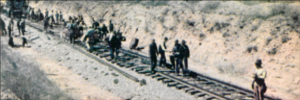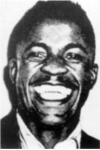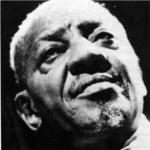LONESOME WHISTLE- THE BLUES HARP
The harmonica was invented in 1829 by Charles Wheatstone, who called his instrument the Aeolina. It was commercially developed in Germany in the 1850s by the Hohner Company, which still dominates production today. It is known in the UK as the ‘mouth-organ’ or colloquially the ‘gob iron’, but in the USA it is called the ‘mouth harp’, or ‘French harp’. Cheap (50c) and portable, the 10-hole harp was a favourite of all early folk musicians, and it’s plangent wail lends itself easily to the Blues.
Most Blues players prefer a ten hole harmonica using the ‘cross-harp’ technique, taking the key note from the second ‘draw’ hole rather than the fourth ‘blown’ hole, thus one-fourth above the given key. The emphasis on the ‘draw’ allows the notes to be bent more easily, giving the player the freedom to incorporate the slurs and slides of the human voice. Many players almost sing into the harp, making the reeds vibrate with a particularly vocal quality. When the harp was amplified on recordings made in Chicago after WWII, it got the nick-name ‘the Mississippi Saxophone’.
Early Blues was largely a rural music and many harp players would mimic animal noises: dogs, roosters, cats, cows, donkeys and hogs were all imitated in harp phrases. A popular tune that lent itself to the harp was the ‘Fox Chase’ with it’s dramatic repeated riffs conjuring up the baying hounds and the hunters’ cries, all delivered with a breathless urgency. Many players would show off their version of the tune, and it became an early ‘standard’.
DeFord Bailey gives a virtuoso performance of ‘Fox Chase’;
 The Railroads were another source of inspiration for harp players’ technique, with the insistent rhythms of the engines, the wheels pounding the tracks, and the bold flares of sound as the trains let off steam or blew their ‘lonesome whistle’. Railways hold a special significance in the black culture of South. They were a symbol of the ‘wanderlust’ many poor black people felt, as well as being a practical means of escape. Blues players, and many other kinds of hobo and drifter, would ‘ride the blinds’ ( a carriage without a connecting door to the next car was ‘blind’, leaving a space to hitch a ride between them). Trains had a further historical association with freedom because of the ‘Underground Railroad’ which smuggled runaway slaves to the North. Slaves could not use the actual railways without a signed bond from their owner, so this unofficial ‘Underground’, with it’s barns and cellars as ‘stations’, was the subversive response. There is a long tradition of railroad songs in the Blues, about travelling around and being a long way from home, building the tracks, working on the trains and the feelings of loss when parted from a loved-one, and very many of them would feature the anguished moan of the harp.
The Railroads were another source of inspiration for harp players’ technique, with the insistent rhythms of the engines, the wheels pounding the tracks, and the bold flares of sound as the trains let off steam or blew their ‘lonesome whistle’. Railways hold a special significance in the black culture of South. They were a symbol of the ‘wanderlust’ many poor black people felt, as well as being a practical means of escape. Blues players, and many other kinds of hobo and drifter, would ‘ride the blinds’ ( a carriage without a connecting door to the next car was ‘blind’, leaving a space to hitch a ride between them). Trains had a further historical association with freedom because of the ‘Underground Railroad’ which smuggled runaway slaves to the North. Slaves could not use the actual railways without a signed bond from their owner, so this unofficial ‘Underground’, with it’s barns and cellars as ‘stations’, was the subversive response. There is a long tradition of railroad songs in the Blues, about travelling around and being a long way from home, building the tracks, working on the trains and the feelings of loss when parted from a loved-one, and very many of them would feature the anguished moan of the harp.
Memphis was an important Blues town in the late 20s and early 30s, when the Jug Band Craze was in full swing. With a mix of ragtime, popular tunes and up-tempo Blues, a Jug Band would have guitars, banjo, sometimes a mandolin but invariably a harp and a man blowing a jug. These good-time dance tunes, with raunchy ‘hokum’ lyrics, provided a popular ‘cross over’ music with white audiences, at a time when segregation was The Law in the South.

Sonny Boy Williamson 1

Sonny Boy Williamson 2
The harp was never really featured as a leading instrument in early Blues bands, being more about adding colour to a band’s sound, much as backing singers enhance the lead vocals, but there were many exceptional harp players on the scene. In the 1940’s, John Lee ‘Sonny Boy’ Williamson was an established and prolific recording artist in Chicago, while at the same time Rice Miller, or Sonny Boy Williamson II, was a regular feature on ‘The King Biscuit Radio Show’ in Helena, Arkansas. Both were very fine players with many hit records, but when (John Lee) ‘Sonny Boy’ was brutally murdered in 1948, the name dispute was over.
When Little Walter joined Muddy Waters‘ band in Chicago and blew his harp into a microphone, he established the harp as an essential element in the urban blues sound. His insistent style and flashy fills and solos, singled him out as a brilliant player, and when Chess released an instrumental of him playing ‘Juke’ he became a star in his own right, touring and recording for many years, and revelling in the limelight. This started a trend for the harp to become a central feature of the Chicago sound, and men like ‘Shakey’ Horton, Junior Wells, James Cotton, and later players like Charlie Musselwhite and Jerry Portnoy continued the movement into new generations of modern Blues bands.
There is something about that haunting wail that goes straight to the heart of the Blues.